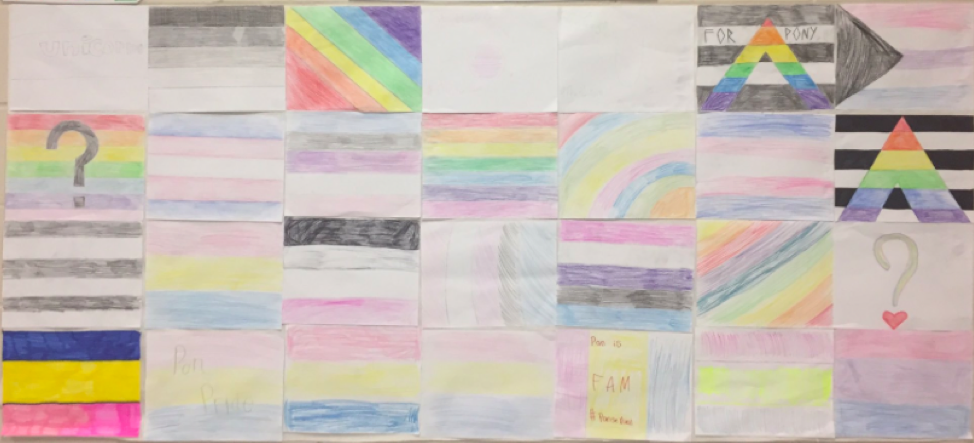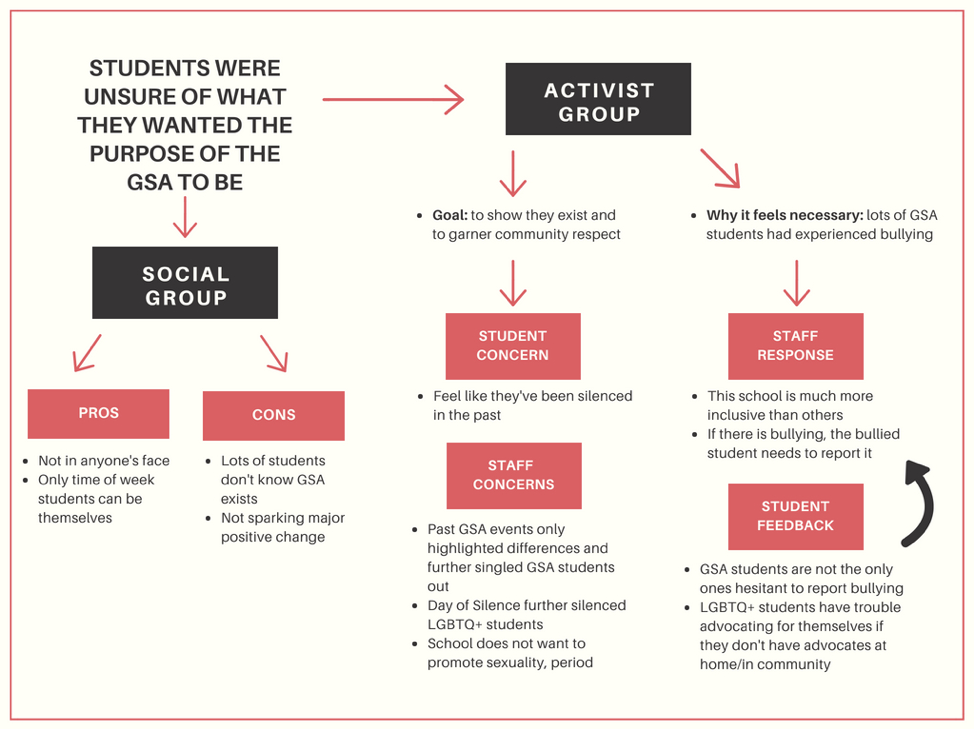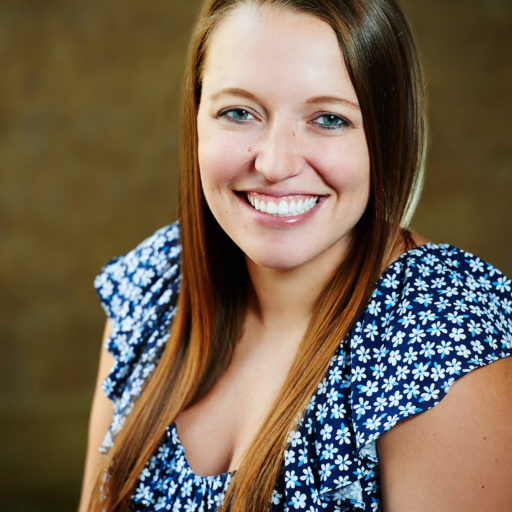Starting a Gay-Straight Alliance at School
I still feel like a novice teacher in many ways, but I have always felt strongly about my ability to advocate for students. In fact, student advocacy was promoted highly in my teacher preparation program and is an expectation for teacher valuation in Ohio. To try to build up that advocacy, in 2014, a colleague and I helped students start the first gay-straight alliance (GSA) at our small, rural high school that was located in a politically conservative community. We had excellent support from our principal. In fact, his daughter was the original president of the group.
At first, the GSA was primarily a social group—a place where LGBTQ+ students and allies could come once a week to be themselves without fear of judgment. The existence of the group spread by mostly word of mouth and by public address announcements, even though many of the students had no idea what the GSA initials represented. As that safe space began to develop and students were able to identify allies within the school, participants also began to develop a desire for more visibility and activism.
The Problems with Visibility
In April 2016, the GSA organized a recognition of the Day of Silence, “a student-led national event where folks take a vow of silence to highlight the silencing and erasure of LGBTQ+ people at school” (GLSEN, 2018). Participation was voluntary and the GSA set up a table in the cafeteria for students to sign up. Over 70 students participated in that first year.
While the students, my colleague, and I anticipated negative comments and pushback from some of the community, there were other issues that arose that we did not predict. A parent called the principal and complained that some of the GSA students had been going up to lunch tables informing people of the event, thus forcing the topic of homosexuality on her child.
Looking back, I truly feel that my fear and unwillingness to have uncomfortable and emotionally charged discussions was one of the biggest things preventing the positive change I desired.
Another parent was concerned that her child would be “forced to be silent for gay rights,” which was neither true nor an entirely accurate depiction of the event’s purpose.
Because of incidents like these, we recognized a need to be more transparent in our advertising of the event, perhaps appealing to individuals’ empathy by highlighting the disproportionate bullying, suicide, and murder rates for LGBTQ+ students. However, because of the parent concerns, the principal asked that students tone down the advertisement altogether—specifically by not going from table to table in the lunchroom and instead allowing interested students
to come to them. The day of the event came and went without too many issues. Students expressed hearing some homophobic and transphobic slurs in the hallways, but in general felt the event was a success.
Feeling more empowered, in the fall of 2016, the GSA students set their focus on making themselves more visible in the community. They knew there were students who either didn’t know about the group, weren’t allowed to attend, or weren’t ready to come out. They wanted to let those students know they weren’t alone. As a result, their next project was to create a compilation of the pride flags they felt represented their identities, drawn and colored by hand. Each flag would represent a student in the GSA, so the sheer number of flags would send the message they intended.
Because of the issues the previous year, I took a photo of the finished flag (Figure 1) and sent it to the principal for approval prior to hanging. Once we had that approval, it went up in a large blank space of the math hallway (somewhere we knew all students would pass at some point in their day). Two days later, my colleague and I were asked to meet with the principal during our lunch period. I felt sick to my stomach because I knew what the outcome of that meeting would be—the flag was coming down.

Figure 1. Compilation pride flag colored by GSA students. Photo Credit: Beverly Stuckwisch
The principal had been contacted by some parents, students, and at least one staff member who expressed issues with the flag. While he responded with defense to remarks that were flat-out discriminatory, he found himself stuck on some other issues raised. For example, the third flag from the right on the bottom row included the word “pansexual.” Some parents expressed they did not want the school to be educating their children on sexuality in any form and that the word itself hanging on the wall was in fact attempting to educate students on multiple sexualities. It was also brought to light that the school policies currently in place did not allow “noncurriculum groups” to hang flyers and posters inside the school. Although that hadn’t been enforced in the recent past, it would have to be enforced now—starting with taking the flag down.
My response was angry tears. I knew how much it meant to the GSA students and what taking it down would represent to them and those who’ve oppressed them. At the time, I was so emotional that I was unable to process my principal’s response or address it with him in an effective way. Instead, I let my feelings stew and blamed him harshly for not being able to see the future and predict what would happen when the flag went up. As someone who historically avoided conflict, it took nearly six months for me to feel like I could have a real conversation with him again.
Rising Tensions and a Difficult Conversation
The 2016 presidential election followed closely behind the flag incident. Students expressed concern and fear in GSA meetings. There was a rising tension in the air as transgender restroom rights were questioned throughout the nation. In April 2017, the GSA sponsored the Day of Silence again. Because of their inability to advertise in ways the students felt were effective, they had about half the number of participants as the previous year. The students, my colleague, and I felt stifled in how we could support activist work in the community, while at the same time feeling it was more important than ever. Partly because of the polarity of the political parties in the news, I found myself making blanketed assumptions about colleagues and community members that I knew to be politically conservative.
At a Knowles Teacher Initiative meeting, I expressed all of these feelings to a group of Knowles Teaching Fellows. It was in this setting that I was challenged to reconsider my assumptions. We identified a common thread of not knowing how to address difficult conversations in each of our settings. As a result, we decided to read Difficult Conversations (Stone, et al., 2010) and make it a goal to face those issues head-on.
In the final week of the 2016–2017 school year, I worked with my principal to host an open conversation about the GSA. The principal, superintendent, guidance counselors, about 10 staff members, five students from the GSA and one parent attended. Prior to the conversation, I emailed a document to staff and GSA students outlining the purpose of the conversation, as well as some conversations starters. The purpose was to:
• ensure that students and staff were on the same page about the purpose of the GSA,
• help make the conversation about GSA more positive in the community, and
• give a voice to anyone who had concerns or comments about the purpose of the GSA.
Initiating this conversation felt risky to me. I worried that either no one would attend or that someone would derail the conversation. I think that was the biggest reason why I waited until the end of the year. If it went well, we would be starting the new year with some footing. If it didn’t go well, we’d have the summer to recover and work on next steps. Figure 2 shows a visual representation of how the conversation went.
After the meeting, I felt like our conversation actually accomplished exactly what we hoped it would. Once everything was out in the open, it was clear that the more vocal staff members who were in opposition to some of the GSA’s activities did not understand the students’ situations or motives. At the beginning of the meeting, one staff member consistently stated that if LGBTQ+ students in our school were being bullied, then it was their responsibility to stand up for themselves and to report it. More than one person reached out to me after the meeting, referring to his comments as “victim blaming.”
One thing that was clear in the conversation, though, was that this staff member had never considered how difficult it would be for a student to advocate for themselves when no one else was advocating for them. More than one staff member was shocked to learn that some of those students had zero support at home and a few had even been kicked out of the house. Most importantly, some really good ideas came up for how to move forward and create a more inclusive learning environment for the next year.

Figure 2. Takeaways from the open conversation about the GSA.
Another, more personal, result of this conversation was that I was finally able to start to see some different perspectives. Planning events solely focused on the GSA and on LGBTQ+ topics was further isolating those students in the eyes of some community members. This was something neither I nor the students in the GSA had considered. Even if we disagreed with the way that some people responded, we couldn’t make progress until we at least recognized their feelings and concerns.
Moving forward, we wanted to focus more on partnering with other groups to help create a more inclusive community for all students. My hope was that through these projects, more students who needed the GSA would find it and other students would discover ways to stand up for their peers as allies. If one of the major goals of the GSA was to help students feel less alone and isolated in our school, then perhaps partnering with other groups to work on bigger projects and goals would accomplish just that.
Making Progress
At the beginning of the 2017–2018 school year, I reached out to all staff to create a professional learning community (PLC) to examine the culture of our school and our students’ experiences of harassment and bullying. Fourteen staff members joined the group and, eventually, four students joined as well. We met throughout the year, analyzing data from surveys, interviews, and focus groups with students as well as brainstorming ways to help students and staff engage more thoughtfully on topics of empathy and equity. To help join various students groups together, the PLC helped the National Honor Society prepare morning announcements for National Bullying Prevention Month in October. Another student club created a bulletin board displaying those announcements. Even though they couldn’t post flyers, the GSA students were allowed to continue to utilize the morning announcements as well and did so during Transgender Awareness week, announcing bullying and suicide statistics for trans students.
As predicted, there was at least one student and parent complaint about the announcements, but since we had made sure to follow all written school guidelines and focused solely on empathy building for trans students rather than on something more politicized like bathroom rights, it was very easy to defend our actions.
Both my colleague and I now work at different schools, for reasons unrelated to the challenges we faced advising the GSA. Prior to opening up the conversations I had previously been avoiding, I would have wrongly assumed that there were very few support systems for the GSA students other than my colleague and me. Instead, when I announced that I was leaving, two other teachers volunteered to be the advisors moving forward. Several others voiced support as well. Additionally, the city where the school resides hosted its first pride event in the summer of 2018. One of the GSA students even attended a planning meeting for the event, which led to them having a table to represent our school.
Looking back, I truly feel that my fear and unwillingness to have uncomfortable and emotionally charged discussions was one of the biggest things preventing the positive change I desired. Using difficult conversations to unpack my assumptions about people I perceived to have different values than me was the first step to real change.
Beverly Stuckwisch is a Knowles Senior Fellow who teaches Algebra II and Honors Algebra II at Dublin Coffman High School in Dublin, Ohio. She is passionate about building student empathy and preparing students to work with diverse groups of people. She is currently an Associate Editor of Kaleidoscope. Reach Beverly at beverly.stuckwisch@knowlesteachers.org.





